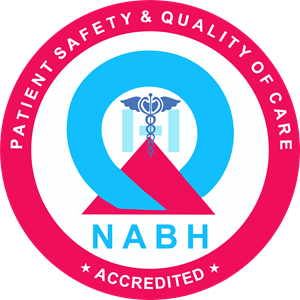DMD mobility loss in children is an issue that instils fear and doubts in every child’s mind. You see your child fall, and you see them weaken day by day. You are constantly worried about their well-being.
Even with treatment, some children with DMD may still experience walking decline because medicine and single-modal treatment cannot stop all the muscle changes.
Understanding why children with DMD lose their mobility and what their early signs are can help you find the right treatment plan for them. Combining the traditional approaches with advanced regenerative science can help your child live an independent life where they perform daily tasks without any hindrance.
Let’s find out more about mobility loss in DMD children and how a combination therapy can be the best solution.
How Mobility Declines in DMD?
Movement or mobility becomes an issue for children with Duchenne muscular dystrophy from childhood. You may notice that your child is struggling with daily activities like jumping, running, and climbing stairs. You may see them fall frequently, too.
Muscles progress with passing time. Their lower body is affected first, and this makes it hard for these children to keep up with their peers. Many children lose their ability to walk gradually, and they may need a wheelchair later in their lives.
The condition doesn’t stop at the leg muscle weakness. The muscles in the arms, neck, and shoulders also become weaker, which affects their upper body strength. On top of that, the muscles may shorten or stiffen. This condition is called contracture, and it limits their flexibility and mobility further.
Heart issues and breathing problems may increase the difficulty in mobility for the patient. Early care and supportive measures are the best way to tackle this condition.
Signs That Your Child May Be Entering Ambulation Decline
Here are some signs that tell you your child is entering an ambulation decline or losing the ability to walk slowly.
- Frequent falls: Your child may stumble or trip more often. This shows that balance and muscle control are weakening.
- Muscle weakness: The leg and hip muscles gradually weaken, making movements slower and more difficult day by day.
- Trouble climbing stairs or standing up: Everyday activities like getting up from a sitting position or going upstairs become painful due to muscle weakness and flexibility loss.
When Does Walking Ability Usually Decline in DMD Children?
Children with Duchenne Muscular Dystrophy (DMD) start facing severe walking and movement difficulties around the ages of 8 to 12 years. You will notice early signs, such as frequent falls, weak leg muscles, and difficulty with activities like climbing stairs and standing up from the floor.
The child’s muscles continue to weaken, and they may even lose their ability to walk independently as the condition progresses. By the teenage years, the child may need a wheelchair to move around. The exact time of losing complete mobility varies from child to child.
Why Treatments May Not Always Prevent Mobility Decline?
Duchenne Muscular Dystrophy (DMD) can continue to cause muscle decline and loss of walking ability even if you are treating your child for it. This happens because the current treatment has limitations that make it difficult to stop the progression fully.
Limitations of Steroids in Duchenne Treatment
Some doctors recommend Steroid therapy to certain children because it slows down muscle weakness and delays mobility loss. But it cannot stop the DMD progression. Also, long-term use of steroids can lead to side effects like weight gain, weaker bones, and growth-related issues.
Why Single-Line Therapies Can Fall Short?
There are many new therapies that focus on a single pathway or genetic target. For example, some treatments may focus on correcting a specific genetic condition, while others may aim at boosting muscle strength by targeting inflammation or improving muscle growth.
These treatments are helpful for certain children but may not provide broad benefits for all.
Relying on a single line of treatment falls short in most cases because DMD is a complex condition that happens due to many genetic and biological factors.
The Challenge of Incomplete Dystrophin Restoration
Most advanced treatment options today focus on restoring or replacing the missing dystrophin protein. But they can bring back only a shorter or partial form of this protein.
This means the muscle cells still don’t get complete protection from damage. As a result, mobility will improve or stabilize for a time. But the therapy is not enough to completely stop the decline.
What are the Common Factors Behind Ambulation Loss in DMD?
Many factors are responsible for the gradual loss of walking ability in children with Duchenne muscular dystrophy. These include changes within the muscles themselves as well as genetic influences that affect how the condition progresses.
Inflammation and Progressive Muscle Damage
In DMD, there is the absence of protective muscle protein, and this can lead to muscle injuries during daily activities. Repeated cycles of injury and repair lead to ongoing inflammation over time. Such wear and tear weakens the muscle and makes walking extremely difficult.
Fibrosis and Scar Tissue Build-Up
These damaged muscles struggle to heal. These damaged muscles are replaced by scarred tissues and fat instead of healthy muscle fibers. This process is called fibrosis, and it stiffens the muscles, reduces flexibility, and speeds up the decline of walking ability.
Genetic Variations That Affect Treatment Response
All children with DMD do not have the same progression. How severe the condition is and how well certain treatments will work for the child will depend on differences in genetic mutation. This also partly explains why some children lose mobility faster than others.
How can a Combined Approach help?
Combining different medical approaches brings together their strengths and best qualities and gives your child the best care to live an independent life for as long as possible.
What is Combination Therapy for DMD Mobility Loss in Child?
MedicoExperts has brought together doctors and specialists from different medical fields who come together and create a treatment plan for your child using different treatment approaches.
They do so because the condition affects muscles, heart, and lungs, and no single therapy can manage everything. A combined approach allows multiple systems of care to work together for better outcomes.
How Blending Traditional and Advanced Care can help Delay Mobility Decline?
An integrative plan that includes Ayurveda, homeopathy, and regenerative medicine alongside physical therapy, nutrition, and conventional medical care can support your child more holistically.
Traditional therapies may help improve strength, immunity, and energy levels, and advanced and conventional approaches address muscle function, heart health, and mobility. This blend may help slow down muscle damage and delay the loss of walking ability.
Evidence and Expert Insights Supporting Integrated Care
Research on regenerative therapies shows promising effects in supporting muscle repair and reducing inflammation. Yoga and Ayurvedic treatment also boost muscle health if done regularly. Homeopathy shows significant potential in counteracting the damaging effects of inflammation in DMD.
At the same time, expert practitioners emphasize that physical therapy, regular exercise, and supportive care are equally essential. By combining traditional wisdom with modern medical advances, families can offer children a more balanced path to managing DMD and improving their quality of life.
Supporting Your Child in Daily Life
Parents need to go beyond medical treatment while caring for a child with DMD. You need to take care of their physical and emotional needs. These are some of the tasks that will help you support your child through physical care, healthy routines, and emotional strength, which is important to allow your child to live more comfortably and confidently.
Physical Therapy and Gentle Exercises
Your child should do regular physical therapy and light, guided exercises, as these can help keep their muscles flexible, reduce stiffness, and support mobility for as long as possible. Activities like stretching, swimming, or using braces and assistive devices can also make movement safer and more comfortable.
Nutrition and Lifestyle Adjustments
Your child needs a balanced diet. Their immunity and strength will be boosted with the right nutrients. It also helps them manage their weight. Small lifestyle changes, like good sleep routines and avoiding overexertion, can also improve your child’s energy levels and overall well-being.
Emotional Support for Your Child and Family
DMD affects your child’s emotional health, too. Being the parent, you can encourage open conversations, offer reassurance, and seek counseling or support from experts to cope better, stay positive, and feel less isolated.
Takeaway
We all know that DMD is not curable. But understanding why mobility declines and exploring both traditional and advanced care options can make a real difference.
A combined approach and daily physical, nutritional, and emotional support can help slow progression and improve your child’s health.
If your child has been diagnosed with DMD, don’t wait to explore supportive care options. Talk to MedicoExperts about our combination therapy. The right guidance today can help slow progression, improve quality of life, and bring comfort to your child and family.
Frequently Asked Questions (FAQs):
Q1. Do kids with muscular dystrophy ever walk?
A. Yes, most children with Duchenne Muscular Dystrophy (DMD) learn to walk normally in early childhood. However, as the disease progresses, muscle weakness increases, and walking gradually becomes more difficult, with many children losing the ability to walk between the ages of 10 and 12.
Q2. What is a major complication of duchenne muscular dystrophy?
A. One of the major complications of DMD is weakness of the heart and breathing muscles. This can lead to serious cardiac and respiratory problems, which require regular monitoring and supportive care.
Q3. Which muscles are most severely affected by DMD?
A. DMD mainly affects the muscles closest to the hips, thighs, shoulders, and upper arms. As the disease progresses, it impacts the heart muscles and muscles that support breathing.
Q4. What is the life expectancy of a child with muscular dystrophy?
A. With modern care, many children with DMD live into their late 20s and 30s, and some even longer. Advances in medical care, respiratory support, and integrated therapies have significantly improved both lifespan and quality of life in recent years.
Q5. At what age does DMD mobility loss in child usually begin?
A. Most children with Duchenne start showing signs of mobility loss between ages 6–12, with walking becoming increasingly difficult.
Q6. What is combination therapy for DMD, and how does it help?
A. MedicoExperts’ combination therapy uses more than one approach to manage DMD. For example, it may blend Ayurveda, homeopathy, regenerative medicine, physiotherapy, nutrition, and conventional medical care after examining your child’s age, condition, challenges, and progression. This integrative model addresses multiple aspects of the disease, and it aims to slow muscle decline and support overall health.
References
- https://pmc.ncbi.nlm.nih.gov/articles/PMC5628390
- https://pmc.ncbi.nlm.nih.gov/articles/PMC3794706
- https://pmc.ncbi.nlm.nih.gov/articles/PMC7534837
- https://pmc.ncbi.nlm.nih.gov/articles/PMC6861917
- https://pmc.ncbi.nlm.nih.gov/articles/PMC3183612
- https://pmc.ncbi.nlm.nih.gov/articles/PMC5133099
Relevant Articles For You
Innovations In MD Therapy
Muscular dystrophy is a group of inherited disorders causing progressive muscle disease due to insufficient or…..Read More
Early Signs Of Muscular Dystrophy
The early signs of muscular dystrophy may be different for different people depending on the type of it. But here are…..Read More
How Does DMD Affect Daily Life?
DMD is a genetic disease that leads to progressive muscle weakness and degeneration. It can be diagnosed in…..Read More
Prevalence And Incidence Of MD
Muscular dystrophies (MDs) are a group of inherited muscle-wasting disorders. In India, precise epidemiological data are…..Read More
Recommendations To Understand Different Treatments
Muscular Dystrophy
A group of inherited neuromuscular diseases come under muscular dystrophy. These conditions cause progressive muscle…..Read More
Duchenne Muscular Dystrophy
DMD is a genetic disorder in which your muscles gradually weaken because of changes in a protein called dystrophin…..Read More
Types of Muscular Dystrophy
Depending on the damaged gene, the site where the gene is located, and the symptoms, muscular dystrophies are divided into…..Read More
Muscular Dystrophy Treatment
When you opt for advanced treatments for muscular dystrophy, they focus more on regenerating muscle…..Read More
Gastrojejunostomy
Gastrojejunostomy surgery is performed for various medical reasons, primarily to address conditions that affect the…..Read More
Medically Reviewed by MedicoExperts Editorial & Clinical Review Board on 21 August 2025



